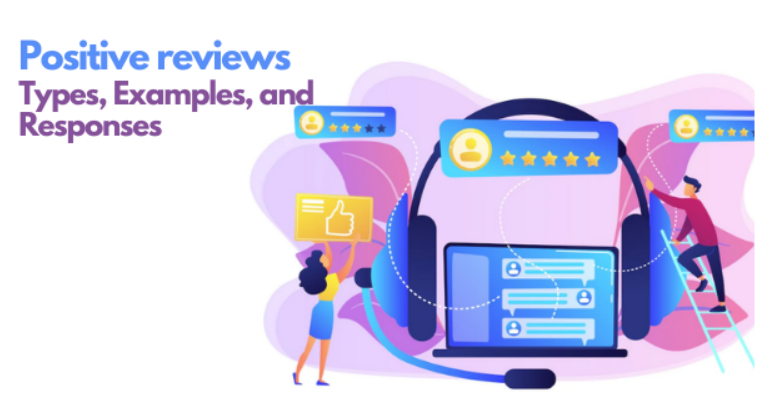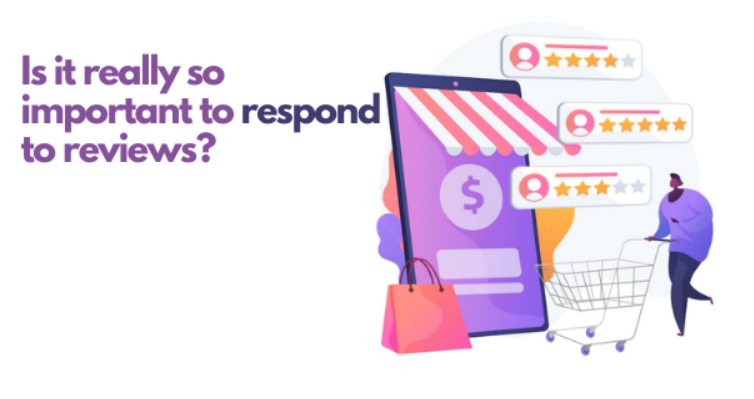Positive reviews are one of the strongest ways of attracting new customers. Nothing speaks louder than other customers praising your work. Why? Because it’s not staged - therefore, it doesn't sound commercial.

Reviews, both positive and negative ones, are the core of your online reputation management. They represent your brand image and set the tone of your communication with customers.
Let’s see what makes a good review, what types of positive reviews there are, and how to write the best response.
What makes a good review?
That’s easy! A good review is a positive review, right? What’s there to explain?
Well, that wouldn’t be completely true.
A high-star rating isn’t enough to set you apart from the competition. Of course, it’s great to receive a 5-star review, but a great review goes far beyond that. Some elements make a good review valuable for other customers:
1. Detailed reviews
You want to get reviews that are as detailed as possible. While doing their research, potential customers find those reviews extremely valuable. Why? Because they are informative and helpful. If your business only has 5-star reviews, that’s great, but at the same time, it doesn’t say much about what exactly are those customers so happy about.
Detailed positive reviews help prospects to understand what sets you apart from the competition and therefore, why you should be their choice.
2. Emphasizing customer experience
It’s not always about the product. Put yourself in the customer's shoes and remember if there were times when there was nothing wrong with the product, but you wouldn’t repeat your purchase.
What made the difference? Customer experience.
We always remember how people made us feel. Hence, emphasizing great customer experience is one of the most important parts of positive reviews. Was an employee particularly helpful? Did they go above and beyond while solving the customers’ problems?
These are all very important questions, especially if you own a restaurant or any other kind of business that is mostly based on service.
Details like these don’t only catch the prospect’s eye, but also help you to get a better understanding of your business.
3. Feedback as the room for improvement
Some positive reviews can serve as ideas for improvement. For example, a customer might be generally very satisfied, but at the same time, he can suggest you speed up your website or make a certain feature easier to use.
Those reviews are very valuable because they will show other prospects how you respond to feedback. In these cases, the best approach would be to start by thanking the customer for their review and mentioning the steps you’re planning to take to improve.
We can’t stress enough how important this is. It shows that you’re not only responding to positive reviews but that you care about what people have to say. Moreover, it proves that you’re not providing generic responses, which creates a more natural feeling of communication.
Is it so important to respond to positive reviews?
From what we explained so far you can already tell the answer to this question. Yes, it’s extremely important. Responding to online reviews, in general, is crucial for your business. Someone took the time to provide feedback, so besides being unprofessional, you would also appear rude if you don’t respond.

It’s obvious why you need to respond to negative reviews. The customer is already unhappy, and you don’t want to make him angrier by ignoring him.
But, people sometimes get confused when deciding whether or not to respond to positive reviews. “They are already satisfied with our business and are just complimenting us. What is there to respond? A simple thank you is enough.” These are some of the most often responses.
If you think about it, most people will easily write a few lines when they’re not so satisfied with the product or customer service. But, when someone is satisfied, it doesn’t take it for granted but instead takes time to publicly compliment you, it deserves a bit more detailed answer than a simple “thank you”. Responding to positive reviews makes prospects think that you are actively and genuinely participating in the communication with clients.
What to pay attention to when responding to positive reviews?
Now that you understand how to recognize a positive review, let’s check how to respond to it.

1. A quick response
Whether is a positive or a negative review, you want to address it as soon as possible. Did you know that around 53% of customers expect a response in less than an hour? And the window for response time is getting smaller and smaller, especially when it comes to social media.
Some of the companies that have a great response time are HubSpot and JetBlue. Their responses are quick, both for negative and positive reviews. Usually, they get involved in communication with customers which only creates a more natural response tone.
2. Personal and creative responses
It’s a no-brainer that everyone wants to be noticed. Customers hate to feel that your response was there just to tickle them from your list. They want to feel seen, heard, and taken into consideration. And that can’t be done without using a personal tone. It’s always good to start by using the customer’s name and avoiding generic answers. Of course, not every response can be unique, especially when responding to positive reviews, but make sure to have a couple of examples that you can switch around.
What can take you a long way are the creative answers. For example, some companies have a Q&A day, where a manager, or even a CEO, are responding to reviews for an hour. This can be very helpful since it gives a face to your brand, and customers are witnessing the responses in real-time.
3. Humor is always welcome
It’s not recommended to use humor when you're dealing with an angry customer. But, when you have to respond to positive reviews, humor is always welcome to break the monotony. This shows that your brand also has a fun vibe. Funny responses can be used for marketing purposes, but make sure not to cross the line. The tone must not be offensive or mocking. Of course, you can use the same strategy with some negative reviews, but as we said, not when the customer is expressing real issues and objections.
4. Everyone likes to be complimented
If for example, a customer was particularly satisfied with customer service and has even named the employee in the comment, make sure to craft your response around that fact. Besides saying “thanks for the review”, you can always say how you passed that compliment to the employee and that they appreciated it very much.
In that way, you’re thanking both the customer and your colleague and lifting the employee morale.
Positive reviews templates
Now that you know everything, in theory, let’s help you with a couple of more practical pieces of advice. Here are some templates that you can use when responding to positive reviews:
- Happy customer and no complaints
If a customer only wanted to share their nice experience with your brand and has no further complaints, your response can be something along these lines:
Customer Name, thank you very much for taking the time to share your feedback! We’re glad that you have an enjoyable experience, and hope to see you again soon!
2. Generally happy customer but with few complaints
In these cases, your response should have 3 components:
- Thanking the customer for leaving a review
- Apologizing for the inconvenience
- Explaining how will you correct your mistake
Thank you for your feedback! We’re very sorry to hear that you had an inconvenience with (name the problem). Be assured that we’re addressing this by (name the steps you’re planning to take). We would love to hear back from you to see how we’ve implemented your feedback.
How online review aggregators can help you?
Taking care of reviews can be a time-consuming process. Customers are not only leaving comments on your website or social media but also on Google Reviews and other review platforms. In other words, almost impossible to track them all.
That’s when online review aggregators can come in very handy. These tools can help you monitor, collect and respond to reviews on different platforms. Some of the websites can be hard to scrape due to their complex structure, therefore you should pay attention when choosing the right review aggregator tool.
Wrapping it up
As you can see, positive reviews might seem simple, but they are far from it. Responding requires some time and moreover, strategy. Hence, we hope you’ll find this article useful and try to implement some of our suggestions. Let us know how it went! 🙂
This topic wouldn’t be complete without negative reviews, right? Stay tuned since that will be our next week’s focus.
